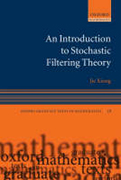
Stochastic Filtering Theory uses probability tools to estimate unobservable stochastic processes that arise in many applied fields including communication,target-tracking, and mathematical finance. As a topic, Stochastic Filtering Theory has progressed rapidly in recent years. For example, the (branching) particle system representation of the optimal filter has been extensively studiedto seek more effective numerical approximations of the optimal filter; the stability of the filter with "incorrect" initial state, as well as the long-termbehavior of the optimal filter, has attracted the attention of many researchers; and although still in its infancy, the study of singular filtering models has yielded exciting results. In this text, Jie Xiong introduces the reader tothe basics of Stochastic Filtering Theory before covering these key recent advances. The text is written in a style suitable for graduates in mathematics and engineering with a background in basic probability. INDICE: PREFACE; 1. Introduction; 2. Brownian motion and martingales; 3. Stochastic integrals and Ito's formula; 4. Stochastic differential equations; 5. Filtering model and Kallianpur-Striebel formula; 6. Uniqueness of the solution for Zakai's equation; 7. Uniqueness of the solution for the filtering equation; 8. Numerical methods; 9. Linear filtering; 10. Stability of nonlinear filtering; 11. Singular filtering; BIBLIOGRAPHY; INDEX.
- ISBN: 978-0-19-921970-4
- Editorial: Oxford University
- Encuadernacion: Cartoné
- Páginas: 270
- Fecha Publicación: 01/05/2008
- Nº Volúmenes: 1
- Idioma: Inglés
